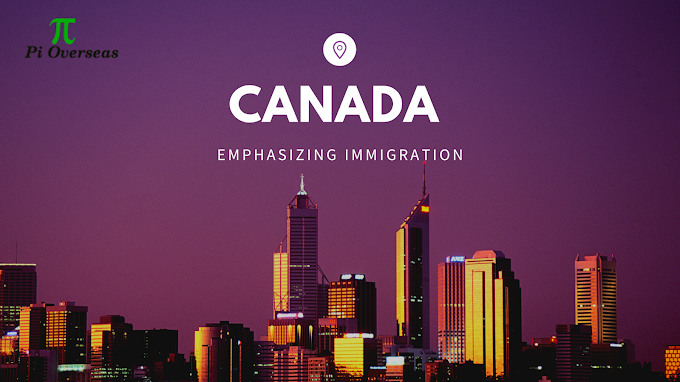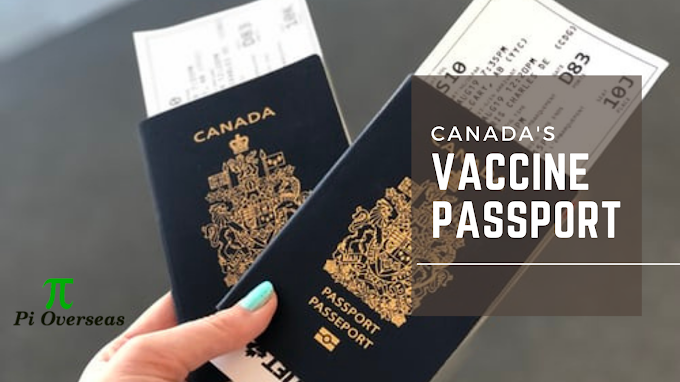Even though Canada continued to process and accept the applications throughout the pandemic but due to border closure and changes in the office operation in regards to public health restrictions led to a massive drop in the immigration levels last year.
Due to this shortcoming, Ottawa decided to overcome this downfall by setting ambitious immigration targets for this year and the coming next two years.
The Immigration Levels Plans for 2021-2023 have been planned to set the immigration targets for about one percent of the Canadian population for each of the upcoming years. This will result in 401,000 permanent residents for this year, 411,000 for the year 2022, and 421,000 for the year 2023.
The Federal Government’s previously planned to set targets of 351,000 in the year 2021 and 361,000 for the year 2022.
Ottawa Plans Bold Steps To Boost Immigration
There have been doubts expressed that Ottawa will not be able to hit the new and higher levels of immigration targets.
In an economic report by the Royal Bank of Canada, there have been indications that Canada will only be able to attract 275,000 immigrants this year because of the imposed travel restrictions.
Ever since this report, IRCC has been able to respond to this downfall by cutting down the Comprehensive Ranking System (CRS) score in the Express Entry draws. This slashing in the CRS score resulted in attracting five times more applicants than usual.
Ottawa responded to this situation by launching 6 new immigration pathways for permanent residency for international graduates and temporary foreign workers. There was a limitation of 90,000 on the English-speaking applicants. But there was no limit on the bilingual and francophone applicants.
Minister Mendicino said that there is a strong demand for anglophones international grad students to the program since its inception. As per the statistics, around 40,000 spots for anglophone international graduates have already been filled.
Francophone Pathways Resulted In Drawing Only Few Applicants
In the other streams related to anglophones, one for the healthcare professionals and the other for non-healthcare workers, essential workers, the response has been much less than expected.
According to the Monday afternoon report, the total number of applicants received by healthcare professionals already in Canada was only 1071 for the 20,000 spots. A total of 7048 applications were received for the anglophone temporary foreign workers for the total of 30,000 spots for the essential workers outside the healthcare sector.
As we can see that there is a far greater response for the anglophone stream than the francophone stream.
Also, only 98 bilingual or French-speaking international graduates have applied under the designated stream. Taking into account the other two streams for francophones or bilingual candidates, a total of 11 applicants had come through the healthcare sector for permanent residency and 282 applicants have come through the essential workers’ category.
All the three streams for francophones and bilingual temporary workers and international graduate students are supposed to be open for an unlimited time frame for unlimited applicants.
These new immigration pathways are being considered as a vital part of the quest to bolster immigration for Canada’s healthcare sector and for sectors providing essential services during this pandemic period.
As per Mendicino, One in three workers in Canada’s healthcare system is an immigrant. This is the reason for these immigration pathways to be so important.
Longer Lasting Plans For Healthcare Professionals
These new immigration pathways will allow all the healthcare workers that are already working in Canada to make longer-lasting plans and also get their qualifications recognized.
All the nurses and healthcare professionals have to get their qualifications in order to get these roles. It is hoped that once the permanent residency status is finalized, they can work on finalizing their future plans and have more stability in their career.
In order to be eligible, workers must be having at least one year of Canadian work experience in either the healthcare profession or any other pre-approved essential occupation.
For international graduate students, there is a condition of completing an approved post-secondary program in Canada within the span of four years or earlier than January 2017.
All the candidates are required to have the intention of residing in a territory or a province other than Quebec to qualify.
Wide Range Of Occupations
The online portal for filling out the application will be open till the date of November 5 or the number of maximum applications reached before this date.
These newly introduced pathways for permanent residency offer a wide spectrum of job opportunities that were often deemed essentials inclusive of jobs in sectors like food processing and manufacturing. These jobs were considered to be low-paying and not regarded as essential jobs.
Candidates can get checklists, forms, eligibility tools, and an application guide for the online program and must include a language proficiency test from a designated testing organization. Language proficiency tests can be submitted with conditions like they are from a designated organization and must be less than two years old.
Applications that are incomplete will be evaluated based on the information provided. Once the application is rejected due to incompleteness, the processing fee will not be returned to the applicants.









.png)




0 Comments